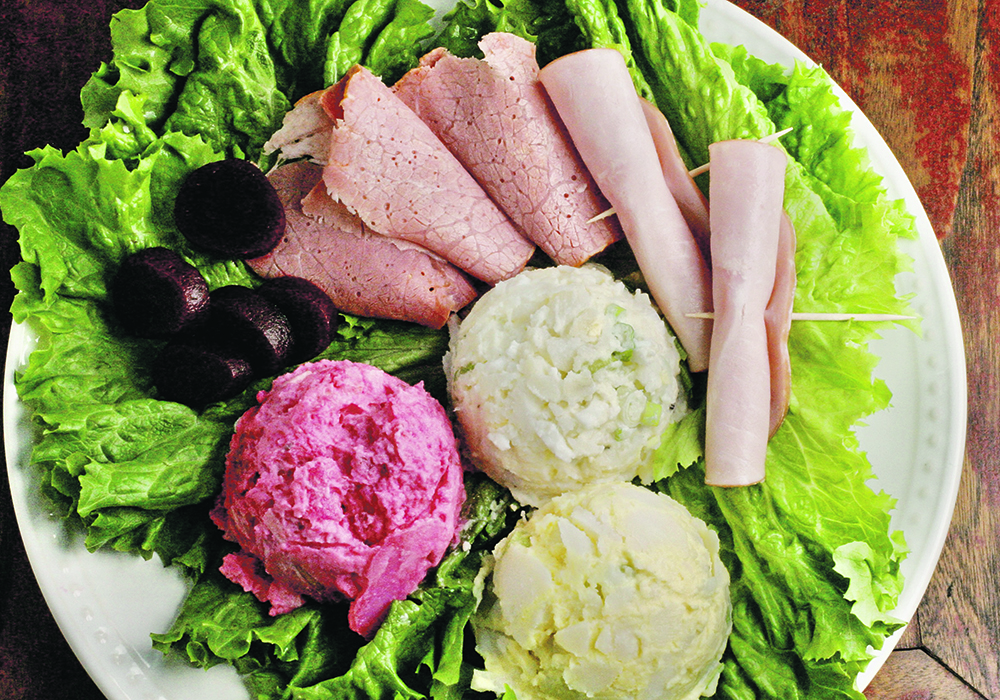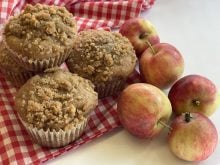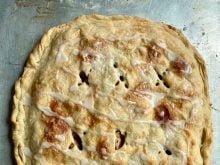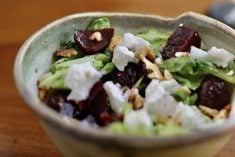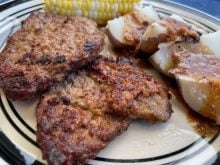Canadian foods are regional. Poutine is common across the country now, mostly because cheese curds are available, and tourtiere is popular because there is a large population of French Canadians outside of Quebec.
Maritime Canada foods, on the other hand, are more difficult to find or even make at home in the West. It’s next to impossible to find salt beef here. Possibly it can be found in Edmonton and Calgary due to the greater number of expats in that region.
I have been intrigued with the foods of Newfoundland and Labrador and decided to try a few things in my home kitchen.
Read Also

Understand limitation periods if considering civil suit
A limitation period refers to the amount of time a plaintiff has to commence a formal claim in court or lose their ability to pursue it.
Their food has origins from many countries. The British settled the Avalon Peninsula. The French settled in the south shore and west peninsula. The Irish were mainly on the eastern shore and the Scottish first settled in Cape Breton but later in Newfoundland. The Portuguese and Spanish did not establish colonies. They came solely to fish.
Iconic meals include the cold plate, Jigg’s dinner and fish and brewis. Fish always refers to cod. Wild meat is also common. Seal flippers and moose meat are probably the most popular.
Crosby’s molasses is used abundantly. Why molasses? Newfoundland was on the shipping route between Europe and the Caribbean. Dried fish would be picked up in Atlantic Canada; sugar, rum and molasses were loaded in the Caribbean.
There are as many recipes for all the favourite dishes as there are home kitchens in the province. Often home cooks don’t like sharing their secrets so finding the perfect recipe is difficult.
Mustard potato salad
- 3 c. cooked potatoes 750 mL
- 2 green onions chopped
- 1 stalk celery finely chopped
- 1/2 c. mayonnaise 125 mL
- 1/2 tsp. salt, optional 2 mL
- 2 tbsp. yellow mustard 30 mL
Cut potatoes in small pieces into a bowl. Add green onions and celery. Mix mayonnaise, mustard and salt. Pour over potato mixture. Stir to combine evenly. This tastes best if refrigerated at least one hour before serving.
Beet salad
- 2 lb. potatoes 1 kg
- 1 c. pickled beets 250 mL
- 1/2 c. mayonnaise 125 mL
- 1/2 onion, chopped
- 2 tbsp. beet juice 30 mL
- 1/2 tsp. sugar 2 mL
- 1/2 c. finely diced apple 125 mL
Mash potatoes and beets together. Combine mayonnaise, sugar, beet juice and chopped onion. Add to the potato and beet mixture. Add the apple and blend together.
Jigg’s dinner
- 2 lb. uncooked salt beef, corned beef, ham hocks or pork cottage roll 1 kg
- 1/2 green cabbage
- 1 turnip
- 6 carrots
- 6 large potatoes
- 1 c. yellow split peas 250 mL
- 3 tbsp. butter 45 mL
- black pepper
The night before making the meal, soak split peas in cold water overnight.
Add salt beef to a bowl and cover with cool water, cover with kitchen wrap and place in refrigerator overnight. The next day transfer peas to a cloth pudding bag or use five layers of cheese-cloth. Tie snugly and don’t leave room for expansion.
Add rinsed, drained salt beef and prepared split peas to a six to eight litre stock pot. Add water to cover by three inches. Bring to a boil and cook for about two hours.
While the pot is simmering, prepare vegetables. Cut cabbage into large wedges; do not core. Wash and peel carrots, leaving them whole. Peel turnip and slice into one inch (.5 cm) thick wedges.
After the beef and split peas have been simmering for about two hours, add vegetables to the pot. Add more water if necessary. Boil for approximately 30 minutes, until almost tender, skimming any impurities that float to the top.
Add potatoes and cook until tender, about 20 minutes. When all vegetables are tender, remove pot from heat.
Remove split peas and mash with butter and season with black pepper. Remove vegetables and meat and place on a platter for serving. Serve with gravy and butter.
Molasses raisin bread
This is the best breakfast bread. Toast it and slather on the butter.
- 1 1/2 c. milk, scalded and cooled to lukewarm 375 mL
- 3/4 c. butter, melted and cooled 175 mL
- 3/4 c. fancy molasses 175 mL
- 1 c. lukewarm water 250 mL
- 2 tbsp. sugar 30 mL
- 4 tsp. active dry yeast 20 mL
- 2 large eggs, whisked
- 8 c. all-purpose or bread flour, plus more for kneading 2 L
- 1 tsp. salt 5 mL
- 2 tbsp. cinnamon 30 mL
- 1/2 tsp. cloves 2 mL
- 2 c. raisins 500 mL
Scald the milk then add the butter to melt. Once melted remove from cooktop, add molasses and set aside to cool.
Whisk eggs in a small bowl and set aside.
Add lukewarm water, sugar and yeast to a small bowl or cup. Set the mixture aside for 10 minutes while the yeast blooms.
Meanwhile, in the bowl of a stand mixer add three cups (750 mL) flour, cinnamon, cloves and salt. Whisk to combine.
Add the molasses, lukewarm milk, butter, eggs and yeast mixture. Stir with a rubber spatula until fully combined.
Place the bowl in the mixer stand and, using a dough hook attachment, add the remaining five cups of flour, one cup at a time, and mix for a minute between each addition. Add the last cup of flour more slowly and only enough so the dough pulls away from the side of the bowl.
You may need a bit more or less flour to get to this point. Add raisins and continue mixing until they are evenly distributed.
When the dough begins to pull away from the sides of the bowl, enough flour has been added. Remove the dough to a lightly floured countertop. Using floured hands, knead the dough for a about five minutes. Add just enough flour to prevent the dough from being sticky.
Transfer the kneaded dough ball to a large bowl that has been lightly coated with cooking spray. Roll the dough around to coat all sides with oil. Cover with a damp kitchen towel and leave undisturbed in a warm spot until doubled in volume, about two hours.
After two hours, remove the towel and punch the dough down with your fist. Knead the dough a few more times, cover once more, and let rest for 10 minutes.
In the meantime, prepare four bread pans by greasing them generously with butter.
Weigh dough into 12 equal portions. They will be approximately 200 grams each. Form into smooth balls using as little flour as possible. Place three in each bread pan.
Cover the loaf pans with a clean kitchen towel and allow the dough to rise for another two hours, or until it has risen about two inches (1 cm) above the top of the pans.
Preheat oven to 350 F (180 C). Bake for 50 minutes. If the loaves are dark after 30 minutes, reduce heat to 325 F (160 C) to finish. Remove from oven. Lift or roll the loaves out of the pans immediately and onto a wire cooling rack. If you wish a glossier, softer crust, brush with melted butter while still hot.
Let the bread completely cool before cutting, about an hour.
Sarah Galvin is a home economist, teacher and avid supporter of local food producers. She has been a market vendor, grew up on a farm in southeastern Saskatchewan and is a member of TEAM Resources.




